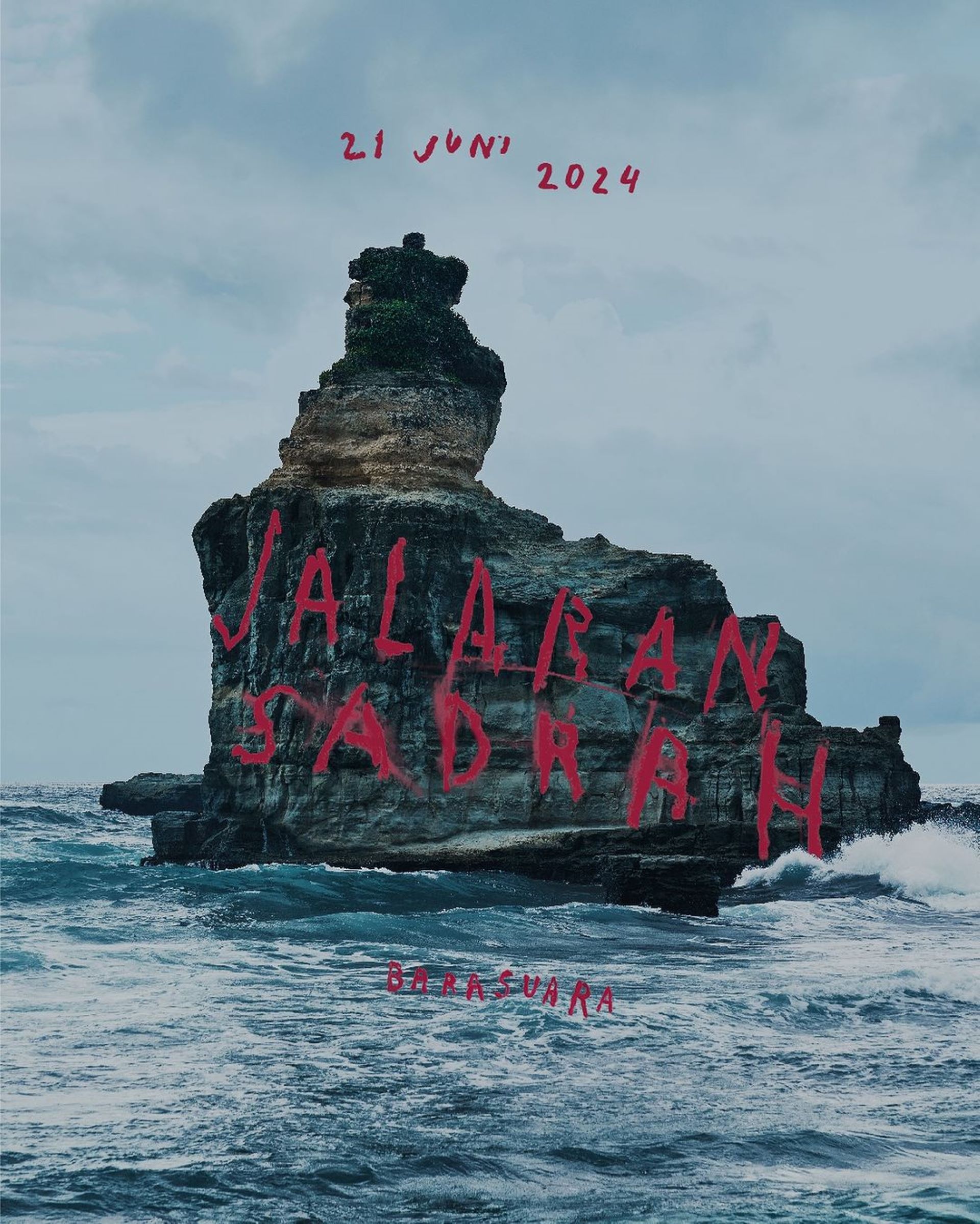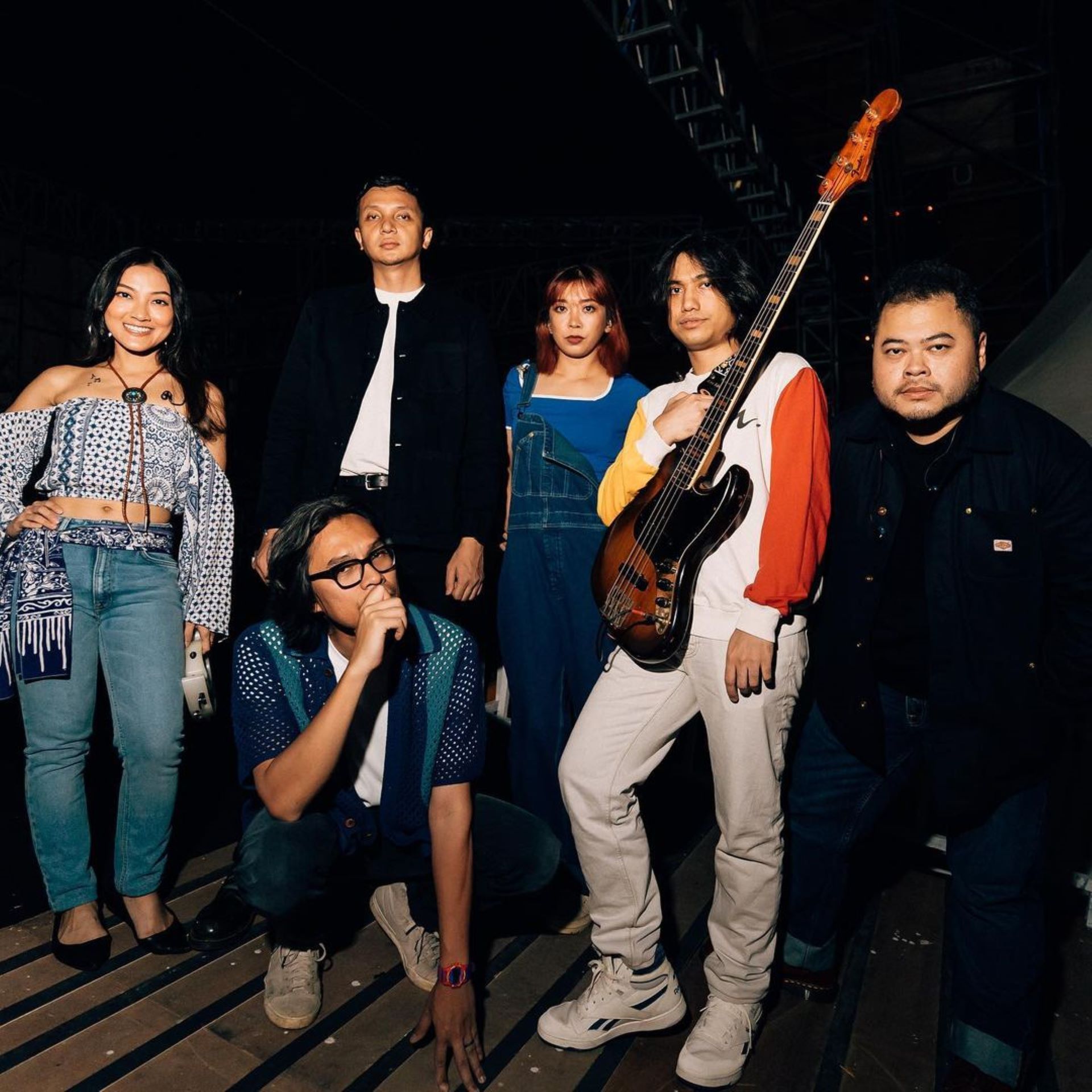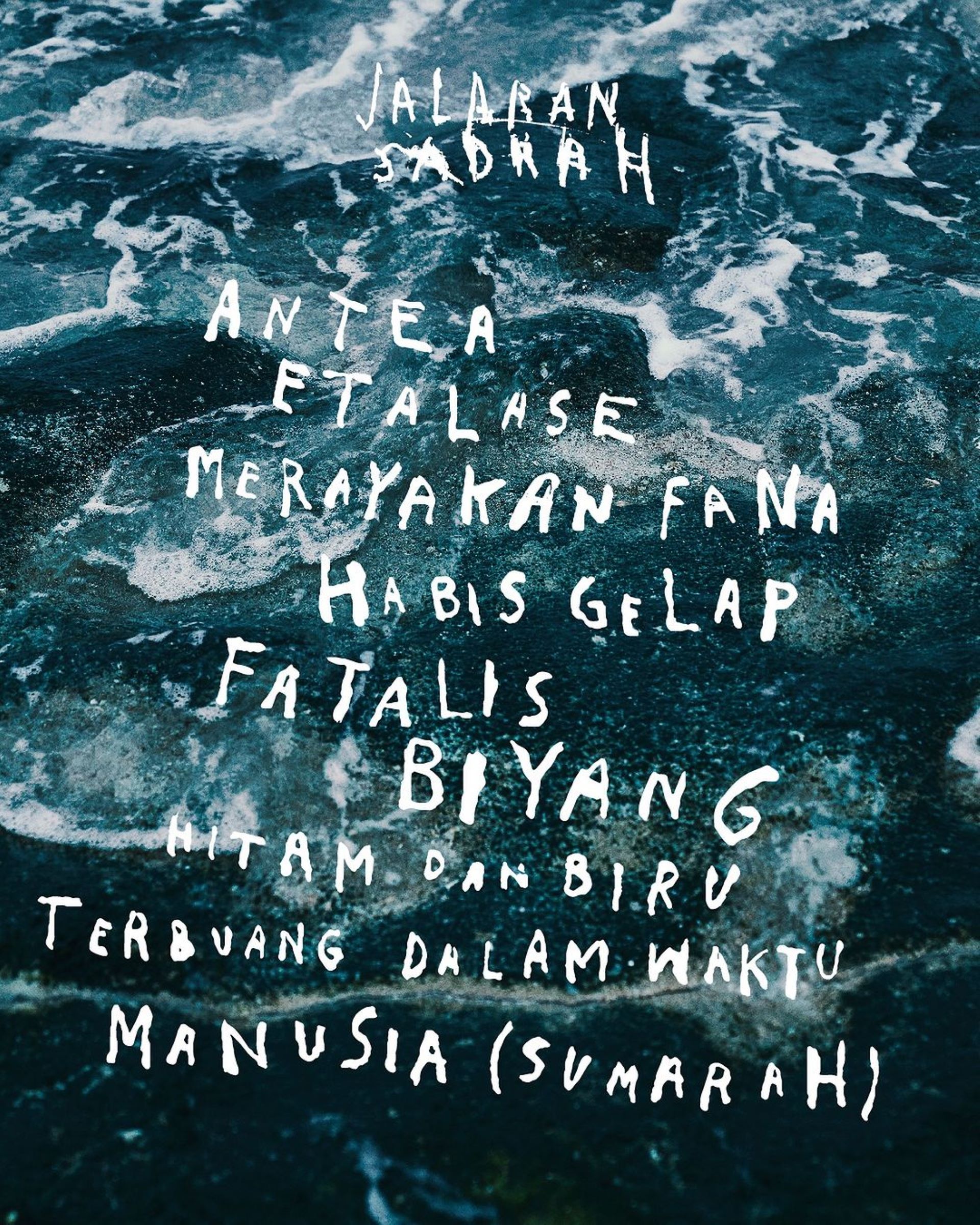Since their formation in 2012, Barasuara has carved out a distinctive place in the Indonesian music scene. The band artfully blends rock, folk and traditional Indonesian influences to create a sound that’s both dynamic and innovative. Comprised of Iga Massardi (vocals and guitar), Marco Steffiano (drums), TJ Kusuma (guitar), Puti Chitara (vocals), Asteriska (vocals), and Gerald Situmorang (bass), Barasuara is celebrated for their energetic performances and poetic lyricism.
As they prepare for the release of their latest album, “Jalaran Sadrah,” we sat down with the band to discuss their creative process, the impact of the COVID-19 pandemic on their work, and their musical evolution.

Can you tell us about the inspiration behind your latest album, “Jalaran Sadrah”?
Iga Massardi: The album was born out of a unique and challenging process. We began gathering in early 2021 at a villa in Puncak, West Java, where we were able to share our thoughts and feelings in a relaxed environment. We continued refining our work until early 2024. The pandemic forced us to adapt—we recorded in our studio and even in our homes to keep the creative momentum going.
What does the album title mean, and what themes does it explore?
Iga Massardi: “Jalaran Sadrah” translates to “the act of surrender.” It delves into themes of acceptance and resignation. We wanted to reflect on the darker inspirations that arose during the pandemic, focusing on life, death, and love. Each song carries a piece of our experiences and emotions from this period.
How has your approach to songwriting evolved with this album?
Iga Massardi: In our first two albums, I felt that writing lyrics was solely my responsibility. However, for this album, I let go of that control. Asteriska came up with the beautiful lyrics for “Biyang,” and I realised I couldn’t have written something so exquisite. She also wrote the lyrics for “Terbuang Dalam Waktu.”
Asteriska: This was my first experience in album production, and I was initially intimidated because everyone around me has high musical standards. I felt like I might not keep up. However, I had a strong intuition that I wanted to contribute lyrics. I isolated myself in a room while others were playing, and I felt compelled to try. When I shared my lyrics, the band liked them and encouraged me to add to the last chorus. Being involved in this process made me feel a sense of ownership and strengthened my bond with the band. It was a unique experience that showed our trust in each other.


What was the recording process like?
TJ Kusuma: We tracked parts at our homes when necessary to maintain the creative momentum. I handled vocal editing, while Gerald managed data gathering and organisation. The familiarity we had with each other made it easier since we already knew each other’s preferences and trusted each other on the details, making the process more seamless.
Asteriska: We all keep each other motivated. There are times when one of us might struggle, and that’s when we step in and lift them up. It’s like a chain reaction of inspiration. For example, if someone comes up with a new idea, it fuels the rest of us to keep pushing forward. There were moments where the synergy in the room sparked unexpected creativity that led to some of our best work.
“Jalaran Sadrah” showcases a significant musical evolution. How did you integrate orchestral elements into your sound?
Gerald Situmorang: Working with Erwin Gutawa was a game-changer. His orchestral arrangements added sophistication and emotional depth to our music, particularly in tracks like “Merayakan Fana,” “Terbuang Dalam Waktu,” and “Hitam & Biru.” We even collaborated with the Czech Symphony Orchestra, which was incredible, especially considering the travel restrictions during the pandemic.
What themes do these tracks explore?
Iga Massardi: “Habis Gelap” addresses the ongoing conflict in Palestine, reflecting societal perceptions of mortality and resilience in the face of suffering. Other tracks, like “Merayakan Fana,” delve into postmortem consciousness, while “Hitam & Biru” metaphorically explores interactions with the angels of death, Mungkar & Nakir. The introspective journey continues with “Anthea,” which ponders existential crises and the search for life’s meaning.


Your music videos also play a crucial role in storytelling. How did you approach that aspect?
Iga Massardi: We collaborated with Yogi Kusuma for our music videos, ensuring a personal touch. Each video is designed to enhance the themes of the album, visually translating our concepts. For instance, in the video for “Terbuang Dalam Waktu,” we used contrasting imagery to depict the tension between hope and despair, aligning with the song’s narrative.
What do you hope listeners take away from “Jalaran Sadrah”?
Iga Massardi: We want this album to reflect our journey through turbulent times, encapsulating our growth as musicians. It’s about surrender, resilience, and introspection—inviting listeners to find comfort in shared experiences.
What has the response been like for this new album?
TJ Kusuma: It’s been incredible! We played a show only four days after the album was released, and the crowd—about 300 people—was already singing along to the songs. The energy was amazing, and it really showed how dedicated our fans are.


How would you say this album differs from your previous ones?
Puti Chitara: The new album is more diverse musically. We experimented with different styles—rock, orchestral, and even some cinematic elements. We’ve grown as musicians, and our sound has matured. With everyone having families now, the themes are more personal and reflective.
Your musical style has evolved significantly in this album, incorporating orchestral elements. How did this transition come about?
Gerald Situmorang: It was a conscious choice to venture beyond our signature rock and folk blend. Collaborating with Erwin Gutawa brought a sophisticated touch to our sound. The orchestral arrangements elevated our music to new emotional depths, especially in tracks like “Merayakan Fana,” “Terbuang Dalam Waktu,” and “Hitam & Biru.” Recording with the Czech Symphony Orchestra was a remarkable achievement, especially considering the online sessions we had to navigate due to travel restrictions. It added a unique richness to our compositions.
“Jalaran Sadrah” is more than just a collection of songs; it encapsulates Barasuara’s journey through turbulent times, their growth as musicians, and their willingness to experiment with new artistic forms. The themes of surrender, resilience, and introspection invite listeners to reflect on their own experiences and find comfort in the shared human condition.
As Barasuara continues to evolve, this album stands as a powerful testament to their ability to transform adversity into art, solidifying their status as one of Indonesia’s most compelling and innovative musical acts.


In conclusion, “Jalaran Sadrah” not only signifies a new chapter in Barasuara’s legacy but also highlights the band’s dedication to artistry, collaboration, and connection with their audience. Through this album, they affirm their place in the ever-evolving landscape of Indonesian music, inspiring a new generation of listeners with their thought-provoking and emotive sound.
Follow us on Instagram, Facebook or Telegram for more updates and breaking news.


